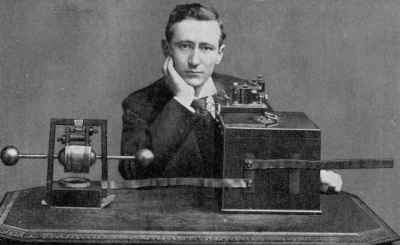
A German physicist named Heinrich Hertz first demonstrated in 1888 that it was possible to transmit electrical energy through the air.
Between 1894 act 1896, the Italian scientist Guglielmo Marconi developed a method of using Hertzian waves to send signals in Morse code – a method that became known as wireless telegraphy. By 1901 Marconi had improve the system so much that he was able to send wireless telegraph signals across the Atlantic from Cornwall to St John’s Newfoundland.
A Canadian engineer made the world‘s first public radio broadcast from Massachusetts, USA, heard by ships around hundred miles (160 km) away on Christmas eve, 1906. He was Reginald Aubrey Fessenden, who had a found a way of combining the signals from a microphone with an electromagnetic waves. The name radio was given to the method.
At first, listeners had earphones linked to receivers that used crystals to pick up the radio waves. These eventually give way to sets with loudspeakers, diode value (invented by an English man, John Ambrose Fleming, in 1904), and more powerful electronic circuits following the American Lee de Forest’s invention of the triode valve in 1907. With the earliest valves (used to amplify signals), sets had to be switched on to warm up for five minutes before the programme begins.
Regular public broadcasting did not begin until 1920, from the radio stations in Pittsburgh and Detroit. Edwin H. Armstrong, an American engineer, improved the receiver in 1924, and by the late 1950s, compact transistors were replacing bulky valves.
Picture Credit : Google

